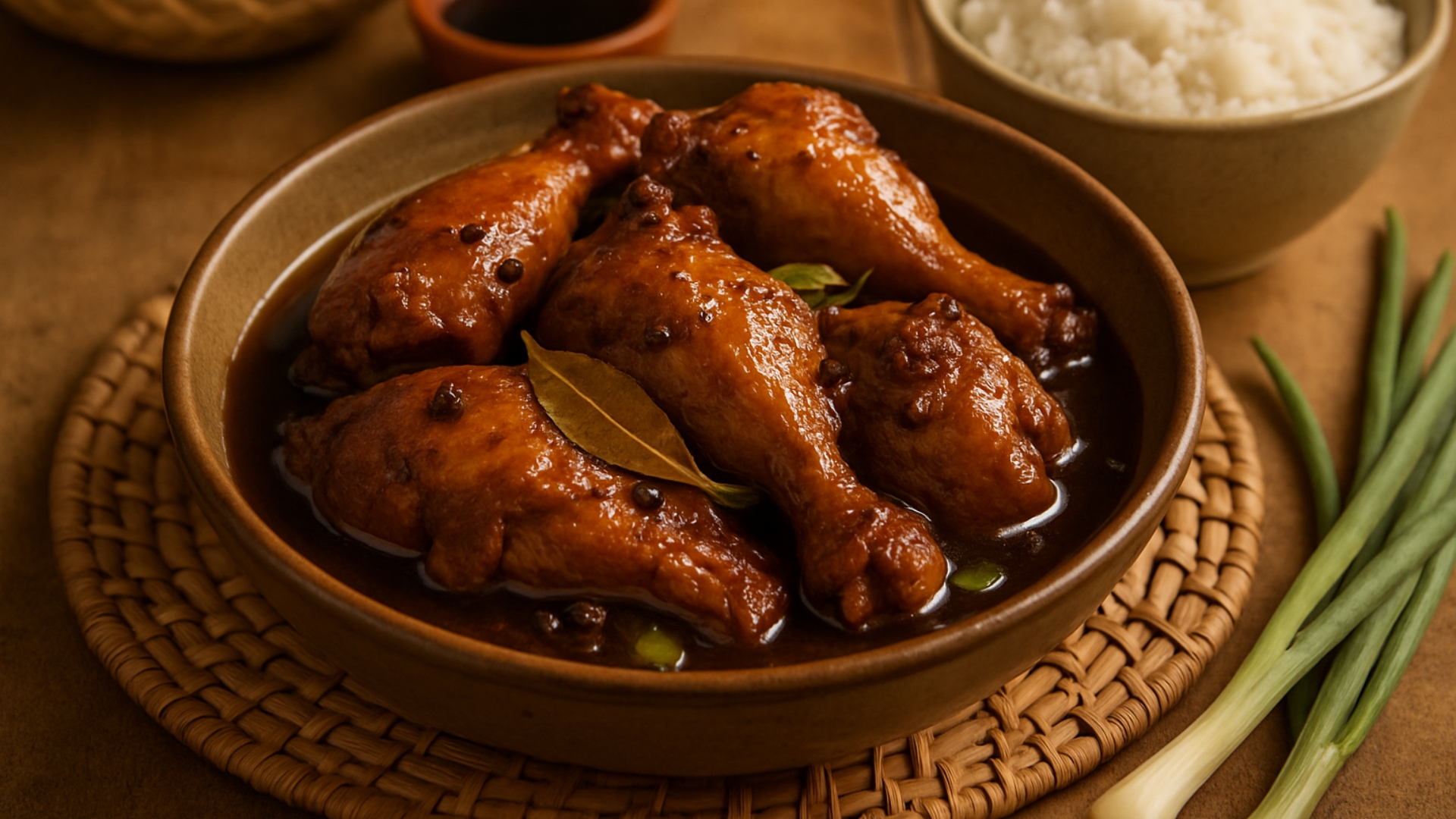
If Filipino food had to crown one ultimate dish, the kind that sparks nostalgia, friendly debates, and cravings at the worst times, it would be Adobo. It’s not just food. It’s comfort. It’s the smell that floats through your neighbor’s window and makes you say, “Adobo na naman? Lucky.”
But where did it come from? Why does every Filipino swear their family’s version is the best? And why does this dish, out of all our national favorites, get the most love around the world?
A Brief History (and Some Naming Confusion)
Long before the Spanish arrived in the Philippines in the 1500s, locals were already stewing meat in vinegar and salt. It was a way to preserve food in hot weather. There was no official name for it back then. It was just a smart, tasty method of cooking.
When Spanish colonizers saw this, they thought it looked similar to their own dish called adobar, which means to marinate in vinegar and spices. So, they started calling it “Adobo.”
To be clear, the name is Spanish, but the dish is completely Filipino. This is our recipe. We just kept the name, probably because we were too busy eating.
Its Origins: Everywhere, Really
Adobo doesn’t come from one specific place in the Philippines. It spread across the entire country like wildfire. From Luzon to Mindanao, every region has their own version, shaped by local ingredients, culture, and family taste.
Some cook it dry. Others make it saucy. Some love it sweet. Others like it sour enough to punch you in the throat.
What’s in It? And Why Does It Cause Drama?
At its core, Adobo is made of:
- Meat (usually pork, chicken, or a mix)
- Vinegar
- Soy sauce
- Garlic
- Bay leaves
- Black peppercorns
That’s the base. But from there, things get wild. Some people add sugar. Others add onions, boiled eggs, or potatoes. Some swear by adding pineapple juice. And some will fight you if you do.
Popular Variations Across the Country
1. Pork and Chicken Adobo
The most common one. The pork gives it richness. The chicken soaks up the flavor. Always served with rice. Usually eaten in silence because it’s just that good.
2. White Adobo (Adobong Puti)
This one skips the soy sauce and uses only vinegar and salt. It’s lighter in color, sharper in taste, and often called the “original” by lola purists.
3. Dry Adobo
The sauce is simmered down until it’s nearly gone and the meat turns golden and crispy. It’s flavorful, greasy, and perfect for baon.
4. Squid Adobo (Adobong Pusit)
Small squid cooked in its own ink with vinegar and garlic. It’s salty, savory, and deliciously messy. Expect black lips and zero regrets.
5. Adobo with Coconut Milk (Adobo sa Gata)
This version is big in Bicol and parts of Mindanao. The vinegar still kicks, but the coconut milk makes it creamy and comforting. Honestly, it feels like a warm blanket.
6. Yellow Adobo (Adobo sa Dilaw)
This one uses turmeric instead of soy sauce, which gives it a bright yellow color and earthy flavor. You’ll find it in Batangas or Cavite. It’s underrated but unforgettable.
Why Is It So Loved?
Because it’s easy to make, it lasts for days and tastes better the next morning, it works for every mood, every age, and every occasion, and because it’s familiar. Every bite feels like home.
Adobo is that one dish you can always count on. Whether you’re a college student missing your mom’s cooking or an OFW recreating it in a small kitchen abroad, it brings comfort.
A Few Fun Facts
- Adobo gets better the longer it sits in the fridge. Leftovers hit harder.
- There are vegan versions now, usually made with mushrooms or tofu. Some titos may protest, but they’ll still eat it.
- The government once tried to create an “official” Adobo recipe for international promotion. The internet absolutely exploded.
What’s Your Adobo?
Ask five different families to make Adobo, and you’ll probably get five unique dishes. That’s what makes it special. There’s no single correct version. Only the one that makes you smile when it hits your nose before it even hits your plate.
Whether it’s sweet, salty, dry, creamy, or loaded with garlic, your Adobo tells a story. And in the Philippines, that story is always worth sharing.
